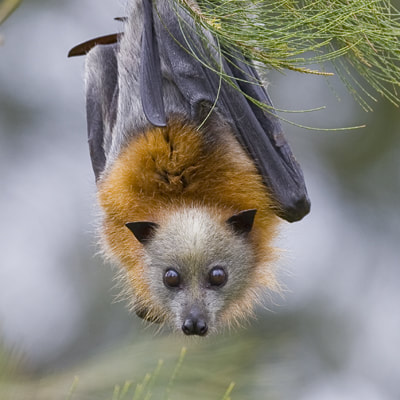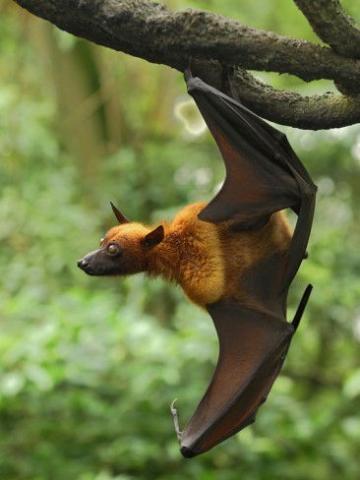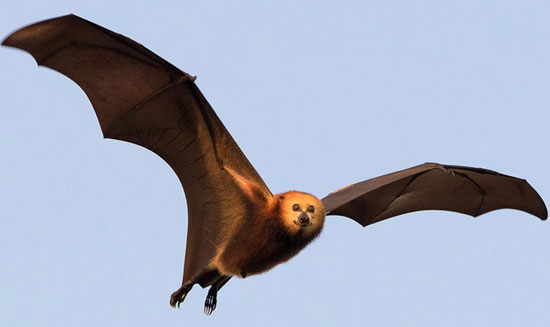|
Yes, of course I have chosen an animal that makes an appearance in Profusion. But the flying fox in Profusion is definitely not one you would ever want to run into! Flying foxes are actually bats. They are in the group of bats called fruit bats (mostly in the genus, Pteropus). Take a look at the face of just about any flying fox and you'll understand how they got their name. They have very fox-like faces. Below is a grey-headed flying fox. There are about 60 species of flying foxes, and they are widely spread throughout the subtropics of Asia, Australia, East Africa, and many islands in the Pacific and Indian Oceans. One thing that distinguishes flying foxes from other bats is that they eat fruit, pollen, nectar, or flowers. This means they have to live in areas that have flowers and fruit to eat year-round (tropical). Also, these bats do not have echolocation (sonar) to help them catch insects. Instead, they have very well-develop eyesight and smell. Check out this spectacular BBC video. Amazing facts about Flying Foxes: These are the largest bats in the world. The large flying fox (yes, that's its name... creative, huh?) has a wingspan of five feet (1.5 meter)! See image below. Some flying fox species are so rare they are found only on one small island. For example, the Mauritius flying fox (See photo below) lives only on the small island of Mauritius in the Indian Ocean. It is very important there because it pollinates flowers and disperses seeds of many plants that also live only on that island. One reason why some flying foxes are rare is that they are simply not very prolific. In fact, the large flying fox usually has only one pup (I love that they're called pups), and that's after a gestation period of 180 days! And then it takes 3-4 months for the pup to be weaned, and it won't be sexually mature for about two years.
Flying foxes mate while they are hanging upside down. Um, this one doesn't need too much explanation, does it? Oh, I guess I could add that the male often has a penis that is one-fourth the length of his entire body. Are you starting to see the logistical problems involved here? Flying foxes hang out (literally) in trees in massive groups called camps. Sometimes these camps can have several hundred thousand bats. But this isn't nearly as many as they used to have before their numbers were depleted. In the 1930s, there were camps that were four miles wide and had 30 million flying foxes! So, the flying fox deserves a place in the S.A.H.O.F. (Supernacular Animal Hall of Fame). FUN FACT: Supernacular comes from the noun, supernaculum, which means a drink to be consumed to the last drop. Although the word is usually used to describe a drink, I personally believe it should be expanded to describe anything that is awesome.
0 Comments
Leave a Reply. |
Stan's Cogitations
Everyone needs a creative outlet. That's why I write. Archives
July 2024
|




 RSS Feed
RSS Feed